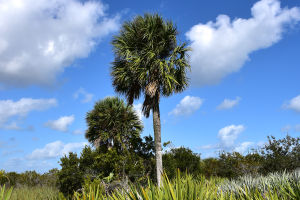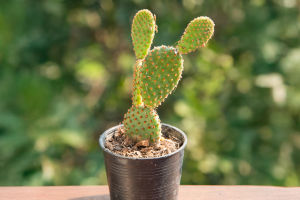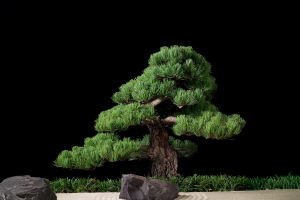Have you ever walked through a park or wooded area and wondered, "Can I eat that plant?" It's a common thought, especially if you're interested in foraging or living off the land.
The idea of gathering wild plants to eat might seem exciting and adventurous, but it's crucial to approach it with caution. While many wild plants are nutritious and tasty, others can be toxic or even deadly if not identified correctly.
So, how can you safely enjoy the benefits of wild plants without the risk? Let's dive into the basics of edible wild plants, including how to safely forage for them, what to look for, and why some are more beneficial than others.
What Makes a Wild Plant Edible?
Before picking any wild plant, it's essential to know the difference between a plant that is edible and one that could cause harm. Edible wild plants are those that have been traditionally consumed by humans and are safe for ingestion when prepared correctly. These plants are often packed with nutrients like vitamins, antioxidants, and fiber, which can contribute to a healthy diet.
However, the key word here is "safe." Some plants look appealing but are dangerous to eat. For example, plants like poison ivy and some types of mushrooms can cause severe illness or even death. Identifying plants with the right edible characteristics is a crucial first step.
1. Start with Identification
The first rule of foraging for wild plants is accurate identification. Many plants look similar, so it's essential to be 100% sure of what you're picking. Here are some basic guidelines to help:
- Use a Field Guide
A good field guide with pictures of plants can be your best friend. Many apps also allow you to take pictures and get an instant ID, but it's always good to cross-reference with a printed guide or expert to double-check.
- Consult with Experts
If you're new to foraging, consider taking a class or going on a foraging hike with an expert. They can teach you how to safely identify edible plants and avoid the toxic ones.
- Learn Key Features
Focus on learning the distinguishing features of plants like leaf shape, flower color, and growth patterns. Some plants might be edible in one season and toxic in another. For example, the berry of a certain plant might be safe to eat, but the leaves are not.
2. Popular Edible Wild Plants
Now that we've covered identification, let's talk about some of the most commonly foraged edible plants. These plants are not only nutritious but also delicious when prepared correctly.
- Dandelion
One of the most common wild plants, the dandelion, is edible from root to flower. The leaves are bitter but can be added to salads or made into a tea. The root can be roasted and used as a coffee substitute, and the flowers can be used to make dandelion nectar or syrup.
- Wild Garlic
Often mistaken for lily-of-the-valley, wild garlic has a strong, garlic-like odor and taste. Its leaves and flowers can be used in cooking, making them a flavorful addition to salads, soups, and sauces. Wild garlic is rich in vitamin C and has antimicrobial properties.
- Nettles
Nettles are packed with vitamins A, C, and K and are a great source of iron. When cooked, nettles lose their sting and can be added to soups, stews, or even made into a pesto. Be sure to wear gloves when handling them raw to avoid being stung!
-Purslane
This succulent, often found in gardens, is rich in omega-3 fatty acids and antioxidants. Purslane has a slightly sour, lemony flavor and can be eaten raw in salads or cooked as a side dish. Its leaves are also high in vitamin C.
- Clover
While it's easy to overlook clover, it's a surprisingly edible plant. The leaves and flowers of clover can be used in teas or added to salads. They're high in protein, iron, and vitamins.
3. Safety Tips for Foraging
While foraging can be rewarding, it's important to follow these safety tips to ensure you're not putting yourself at risk:
- Avoid Unknown Plants
If you're unsure about a plant, don't eat it. Some wild plants are poisonous, and even experienced foragers make mistakes. When in doubt, always err on the side of caution.
- Check for Pollution
Make sure the area where you're foraging is free of pesticides, pollution, or animal waste. Avoid picking plants that grow near roadsides or heavily trafficked areas, as they may have absorbed harmful chemicals.
- Properly Prepare Plants
Certain wild plants must be cooked to make them safe for consumption. For example, some types of beans contain toxins that can be neutralized by cooking. Always research the proper preparation methods for any plant you plan to eat.
- Start Small
If you're trying a new plant for the first time, it's a good idea to start with a small amount to ensure you don't have an allergic reaction. Even edible plants can cause discomfort for some people.
- Know the Law
Some areas have restrictions on foraging, especially in protected or national park areas. Make sure to check local laws before harvesting wild plants.
4. The Nutritional Benefits of Wild Plants
Edible wild plants are often more nutrient-dense than their cultivated counterparts. They are typically grown without pesticides or fertilizers, making them richer in vitamins, minerals, and antioxidants. Here are some benefits:
- Rich in Vitamins
Many wild plants are packed with vitamins A, C, and K, which help support immunity, skin health, and skeletal strength.
- High in Antioxidants
Plants like wild garlic, nettles, and purslane are loaded with antioxidants that help fight oxidative stress and protect the body from inflammation and chronic diseases.
- Boosts Fiber Intake
Foraging can help you increase your fiber intake, which supports digestive health and helps keep you feeling full longer. Wild plants like dandelions and nettles are great sources of fiber.
Final Thoughts
Foraging for edible wild plants can be an exciting and rewarding way to connect with nature and enjoy fresh, nutritious foods. However, it's essential to approach it with knowledge and caution. Always make sure to properly identify the plants you're foraging, know how to prepare them safely, and respect nature's resources.
If you're new to foraging, start slow and learn from experts. With time and experience, you'll be able to identify safe, delicious plants that can enrich your diet and support your health. So, why not venture out next time you're walking through a park or forest? You might just discover a new edible treasure!


